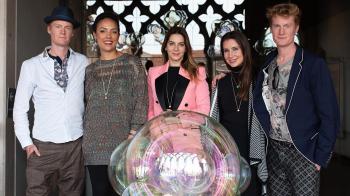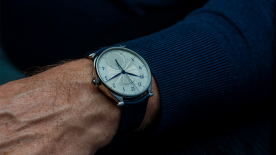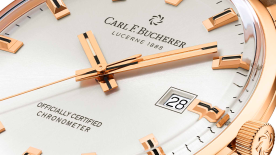At the 58th edition of the Venice Biennale, the sprawling exhibition of contemporary art, one of the best attended openings was an off-site show titled Dysfunctional that featured a selection of works produced in collaboration with the Richemont-owned maison, Piaget.
The splendid setting of the show was the Galleria Giorgio Franchetti alla Ca’ d’Oro, a museum housed in a Venetian gothic palazzo located in the historic Cannaregio district of Venice, where Piaget exhibited its connection to today’s artistic creation while putting forward some of its own ancestral savoir-faire.

It was on that thin frontier between art and design that Piaget positioned itself with the fruit of its collaboration with the designer-duo known as the Verhoeven Twins – the brothers Joep and Jeroen - represented by the Carpenters Workshop Gallery, an art and design gallery dedicated since 2006 to presenting functional works of design made with an artistic sensibility. The works presented by the Verhoeven Twins were each made of industrial glass shaped like soap bubbles, for the most part suspended from the ceiling of the enclosed loggia on the third floor of the Palazzo, well-positioned to capture and reflect the warm lights of Venice.

Piaget had given the Twins “carte blanche” to produce their glass ensemble titled “Moments of Happiness,” consisting of a dozen pieces whose sole function was to reflect the ambient, natural light. The 24ct yellow gold attachment from which the ceiling pieces were suspended was presented as a tribute to the Maison’s own Swiss goldsmithing tradition.
Chabi Nouri, chief executive of Piaget, was on hand at the inauguration of Dysfunctional and spoke with WorldTempus about the evolving “marriage” of luxury with contemporary art.
Piaget chose to collaborate with Carpenters Workshop, a gallery well known for its commitment to blurring the boundaries between art and craft. Does that explain your collaboration?
That positioning was really what clicked between us. At Carpenters Workshop Gallery, art and craft are on an equal footing. Craft is the foundational element of the art they show. And that is precisely what we do at Piaget, with the fusion between our art and creativity, and the work that our in-house artisans do in handcrafting gold or in working with stones. Historically, our founders referred to our craftsmen as “les artistes”, and art has always been an important part of our values. We thought this collaboration would be interesting to allow us take inspiration from other arts, and to bring the work of these artists into our own environment. Looking to the outside world is one way for us to push the limits of our craftsmen to reinvent their craft, to show ways to work with different scales, in different ecosystems and with new constraints. Our products - in particular our watches - are functional works of art.
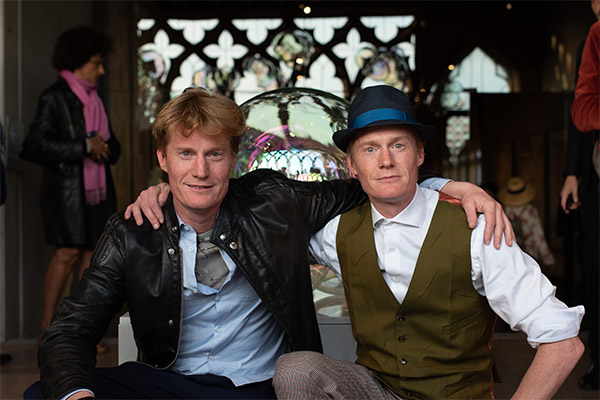
What is your view of luxury’s foray into contemporary art?
Speaking for Piaget, the connection to art is very relevant because our own creations are works of art made by highly trained artists. We think of our own pieces as multi-dimensional artworks, often unique, just like art pieces. Our connection to art is also about preserving the arts. Within our Maison, we have know-how that has been passed on for generations. With every new piece, our artisans invent or re-invent a new art in a highly dynamic process. Our in-house craftsmen tell me that even after 40 years with Piaget, they continue to perfect new techniques, in part because we encourage them to push their own boundaries.
Has Piaget been involved with the arts in the past?
Piaget has often collaborated with living artists, starting in the 1960s with Salvador Dali and in more recent years with Pierre et Gilles, Willy Rizzo or Richard Avedon. Today, we do not limit ourselves to contemporary art. We have worked with Italian artisans specializing in micro-mosaics, an art that has existed since the 15th century. We aim to preserve that art and bring it into our own creations. We stay focused on those arts that are relevant to Piaget, because it is crucial that there be an affinity between our Maison and its artisans, and the specific art or craft in question to respect our own authenticity. We have a real savoir-faire in the art of crafting gold and working with color (mostly with stones), and that serves as a fantastic spectrum on which to engage in outside collaborations.
Piaget is a sponsor of this show but its name does not appear anywhere. Why not?
This stage has been set for the artists. Our collaboration with the Verhoeven Twins to produce “Moments of Happiness” echoes our spirit. We don’t need to put our name forward because we respect the work of the artists. The gold used to support their pieces is an homage to our gold craftsmanship. We also plan to commission additional works with different gold elements that will be traveling around the world very soon. Specifically, the Verhoeven Twins will be creating five one-of-a-kind art pieces with 24ct gold for some of our key Piaget flagship boutiques which we plan to unveil throughout the year.
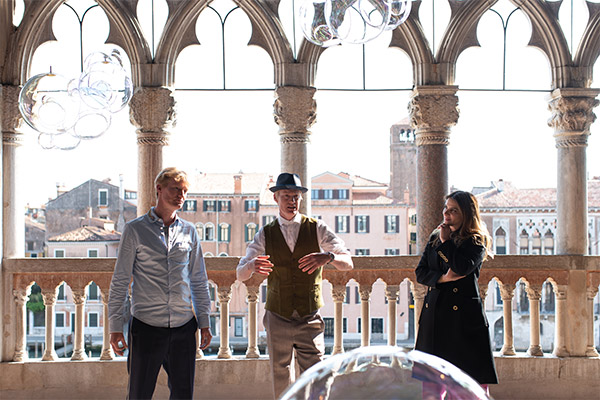
Why did you choose Venice to show the fruit of this collaboration?
Venice is today a hub for craftsmanship. It is still and perhaps more than ever relevant to both art and design. That is why it made sense for us to be here. Seeing the lights of Venice reflected in these pieces fits rather well in the ecosystem of Piaget. Beside this collaboration, we have always enjoyed a great relationship with Italy. We have been present in Venice for some 30 years, in particular with our ongoing commitment to restoring and maintaining the working mechanism of the Tower Clock in St Mark’s Square and the clock in the courtyard of the Doges Palace. We have the necessary know-how, both technical and scientific, to preserve those functional works of art, and that has been very inspirational to us. Also, Venice is a place where magic happens.
